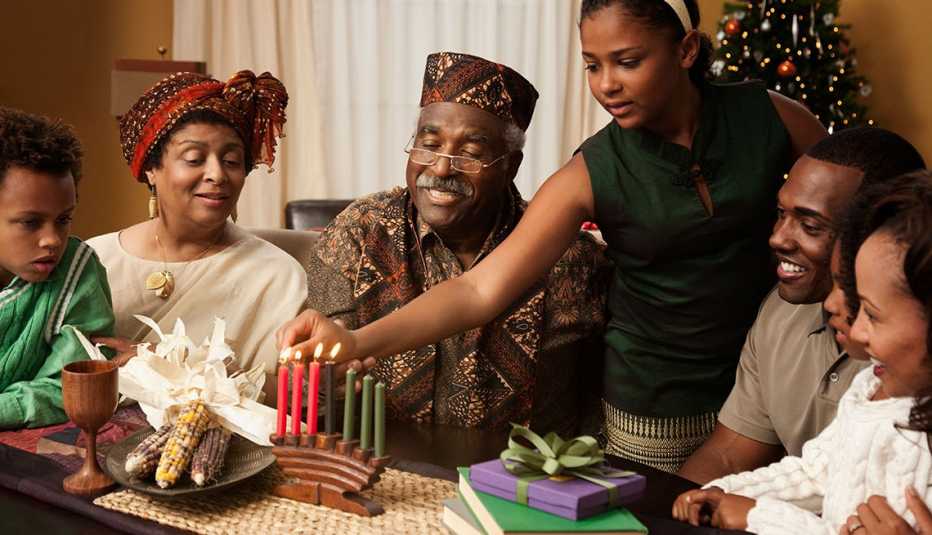AARP Hearing Center


For the millions of people around the world who observe Kwanzaa, the seven days after Christmas are ripe with remembrance of the past, hope for the future and generational unity through feasting and rituals that celebrate and honor African and African American culture.
Each day from Dec. 26 to Jan. 1 corresponds with a principle inspired by various African harvest traditions found throughout the continent: Umoja (unity), Kujichagulia (self-determination), Ujima (collective work and responsibility), Ujamaa (cooperative economics), Nia (purpose), Kuumba (creativity) and Imani (faith).
Debra Hawkins, 66, started celebrating Kwanzaa almost 40 years ago and remembers reciting the principle of the day at Kwanzaa gatherings, defining it and expressing what it meant to her, in front of her family and friends. “We still have the same roots,” says Hawkins, of Dolton, Illinois. But her family has grown and evolved, and the responsibilities have shifted to younger generations.
“We’re experiencing the fruits of our labor when our children are taking it over,” Hawkins says. “We have no problem relinquishing what we’ve been doing, the labors we put in.”
History of Kwanzaa
Maulana Karenga created the holiday in 1966 as a way for African Americans to reflect on their identity and connection to the African diaspora.
“Kwanzaa, first of all, is rooted in and rises from the ancient harvest celebrations of Africans,” Karenga said at a pre-Kwanzaa event at California State University, Long Branch, where he is a professor and chair of the Department of Africana Studies. “Kwanzaa also has modern origins rooted in and rising from the Black Freedom Movement of the ’60s.”
The intergenerational aspect of the celebrations are exactly what make the secular, pan-African holiday special and worth observing, says Kelly Navies, the oral history specialist at the National Museum of African American History and Culture in Washington, D.C.
“One of the first things you do at a Kwanzaa ceremony is you acknowledge the eldest person in the room. That person has a place of honor and you ask that person to bless the evening,” says Navies.
The commemoration also involves active participation from children – whether by lighting the candles or defining and expressing the principle through storytelling, poetry, music and art.
Navies says this kind of intergenerational engagement through activities doesn’t have to end when Kwanzaa is over.
“There are a lot of children growing up without any connection, and that goes both ways. We have a lot of elders who are living in these facilities where they don’t have contact with younger people,” says Navies. “Kwanzaa is one way to disrupt that pattern and to bring these generations together and to encourage people outside of Kwanzaa to spend more time with one another.”
Here are four ways grandparents can connect with grandchildren during the seven days of Kwanzaa and beyond.



































































More From AARP
Fun, Frustration-Free Cookie Recipes to Make With Kids
Set your baking helpers up for success with recipes that meet them where they are developmentallyHoliday Traditions Quiz
Answer these questions about cultures, countries
Holiday Food Traditions: Test Your Knowledge
How well do you know culinary traditions and customs?
Recommended for You